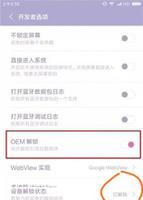第二节——vue多页面开发 - 前端小小匠

第二节——vue多页面" title="vue多页面">vue多页面开发
我们平常用vue开发的时候总觉得vue好像就是专门为了单页面应用而诞生的,其实不是。因为vue在工程化开发的时候很依赖webpack,而webpack是将所有的资源整合到一块,弄成一个单页面。
但是vue不止可以做单页面,它还可以做多页面,如果要做多页面的话需要对他的依赖,也就是webpack就是重新配置才可以。本文将详细讲webpack的配置。
1、进入\build\webpack.base.conf.js目录下,在module.exports的域里,找到entry,在那里配置添加多个入口:
entry: { app: \'./src/main.js\',
one: \'./src/pages/one/one.js\'
},
注意one的修改。
2、对开发环境run dev里进行修改,打开\build\webpack.dev.conf.js文件,在module.exports那里找到plugins,下面写法如下:
new HtmlWebpackPlugin({ filename: \'index.html\',
template: \'index.html\',
inject: true,
chunks: [\'app\']
}),
//one
new HtmlWebpackPlugin({
filename: \'one.html\',
template: \'src/pages/one/one.html\',
inject: true,
chunks: [\'one\']
}),
在chunks那里的app指的是webpack.base.conf.js的entry那里与之对应的变量名。chunks的作用是每次编译、运行时每一个入口都会对应一个entry,如果没写则引入所有页面的资源。
3、之后就对run build也就是编译环境进行配置。首先打开\config\index.js文件,在build里加入这个:
build: { // Template for index.html
index: path.resolve(__dirname, \'../dist/index.html\'),
// one
one: path.resolve(__dirname, \'../dist/one.html\'),
4、然后打开/build/webpack.prod.conf.js文件,在plugins那里找到HTMLWebpackPlugin,然后添加如下代码:
// see https://github.com/ampedandwired/html-webpack-pluginnew HtmlWebpackPlugin({
filename: process.env.NODE_ENV === \'testing\'
? \'index.html\'
: config.build.index,
template: \'index.html\',
inject: true,
minify: {
removeComments: true,
collapseWhitespace: true,
removeAttributeQuotes: true
// more options:
// https://github.com/kangax/html-minifier#options-quick-reference
},
// necessary to consistently work with multiple chunks via CommonsChunkPlugin
chunksSortMode: \'dependency\',
chunks: [\'manifest\', \'vendor\', \'app\']
}),
// one
new HtmlWebpackPlugin({
filename: config.build.one,
template: \'one.html\',
inject: true,
minify: {
removeComments: true,
collapseWhitespace: true,
removeAttributeQuotes: true
},
chunksSortMode: \'dependency\',
chunks: [\'manifest\', \'vendor\', \'one\']
}),
其中filename引用的是\config\index.js里的build,每个页面都要配置一个chunks,不然会加载所有页面的资源。
这里展示一下我的项目目录
1、然后one.js文件可以这样写:
import Vue from \'vue\'import one from \'./one.vue\'
Vue.config.productionTip = false
/* eslint-disable no-new */
new Vue({
el: \'#one\',
//teleplate:\'<cell/>\',
// components:{ cell }
render: h => h(one)
})
这个配置在运行时(npm run dev)会报错
[Vue warn]: You are using the runtime-only build of Vue where the template compiler is not available. Either pre-compile the templates into render functions, or use the compiler-included build.(found in <Root>)
网上的解释是这样的:
运行时构建不包含模板编译器,因此不支持 template 选项,只能用 render 选项,但即使使用运行时构建,在单文件组件中也依然可以写模板,因为单文件组件的模板会在构建时预编译为 render 函数。运行时构建比独立构建要轻量30%,只有 17.14 Kb min+gzip大小。
这里面我用render函数取代了组件的写法,在运行就没问题了。
2、one.vue写法如下:
<template><div id="one">
<p>{{msg}}</p>
</div>
</template>
<script>
export default {
name: \'one\',
data() {
return {
msg: \'I am one\'
}
}
}
</script>
3、one.html写法如下:
<!DOCTYPE html><html>
<head>
<meta charset="utf-8">
<meta name="viewport" content="width=device-width,initial-scale=1.0">
<title>one-page</title>
</head>
<body>
<div id="one"></div>
</body>
</html>
注意id的修改,之前忘记修改,页面一片空白。
4、最后App.vue里这样写:
<template><div id="app">
<img src="./assets/logo.png">
<p>
<a href="one.html" target="_blank">one-page</a>
</p>
<router-view/>
</div>
</template>
<style>
#app {
font-family: \'Avenir\', Helvetica, Arial, sans-serif;
-webkit-font-smoothing: antialiased;
-moz-osx-font-smoothing: grayscale;
text-align: center;
color: #2c3e50;
margin-top: 60px;
}
</style>
大功告成,页面都出来了。
two的写法与之类似,大家可以自己在下面在建一个文件。
over!
以上是 第二节——vue多页面开发 - 前端小小匠 的全部内容, 来源链接: utcz.com/z/379763.html





